Update to this post: Michael F. Keane, Jr. died unexpectedly on March 28, 2015. The following tribute comes from Quidley & Company Fine Art, a gallery that had been home to the artist and his artwork for many years.
“For the past three decades, Michael brought joy to those who viewed his artwork. His serene and luminous marine paintings portrayed the warmth of summer days spent sailing on Nantucket Sound. Keane had the remarkable ability to transport a viewer: to gaze at one of Michael’s beautiful and obviously lovingly wrought images is to imagine yourself cruising on the open sea–whether on a striped sail Beetle Cat or a majestic J-Class yacht–it’s the next best thing to actually being out there.”
I hope you enjoy a look at some of Michael’s lovely, peaceful work. His contribution to the art world will never be forgotten.

Rainbow Run
Part One in an Occasional Series on My Favorite Artists
I love the play of light on sand and sea on Nantucket Island. It inspires artists here just as the light in the South of France has inspired so many of my favorite artists for centuries; the sunlight shimmers and sparkles in a way that is magical to observe, and I am in awe of those talented painters who can capture it on canvas.

Off Boston Harbor
One of those painters is famed marine artist Michael Keane. A dear friend for years, and a fine arts painter for over half a century, Michael’s work is eagerly sought after by collectors. His shows are an established tradition here on Nantucket, where people who love to sail and love the sea appreciate the special affinity he has for painting the world of waves and wind.
 The Mighty Twelves
The Mighty Twelves
Truly a Renaissance man with so many interests and skills I can’t keep track of them all, Michael’s career as a painter was never pre-ordained. When it was time for college, although he had painted since childhood, his father insisted he attend a teacher’s college instead of art school, hoping to see his son gainfully employed. But Michael hated it, and he worked instead at a number of mundane and laborious jobs, including time spent in factories, as an auto mechanic and at a shipyard.
Determined to be an artist, though, he served an eight year apprenticeship with noted landscape painter, Edward Harrigan, and a four year apprenticeship with noted marine artist Marshall W. Joyce. After that, he studied for four years, and then taught portraiture and figure painting with Clemente Micarelli in his studio. He majored in Visual Design at UMass and afterward taught painting for 17 years.
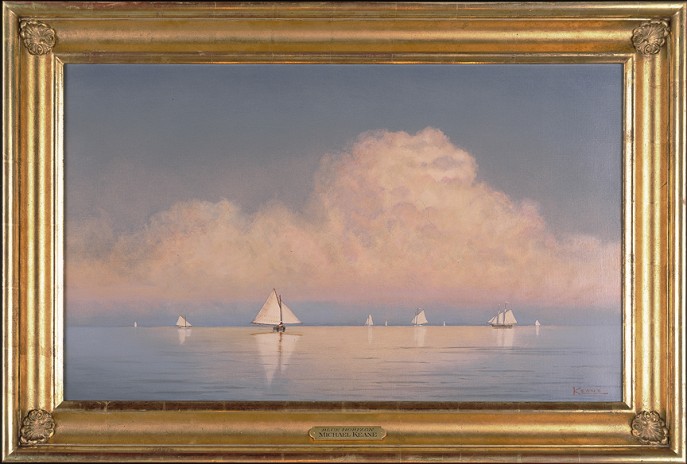
Blue Horizon
His break into the art world came with a Best in Show award at a Duxbury, Massachusetts art show. The painting entered there began a new life for Michael, at a time when he desperately needed it. In poor health from a rheumatic illness, he was unable to summon the strength to continue his physically demanding day job.
He went to his favorite place on Duxbury Beach, and as he describes it, “Everything was going all wrong. As I stood there, the sky turned black, and it started to hail and rain. As I looked across the sea, all of a sudden the light broke through. It raced across the land in a splash of color. I knew this was a transcendent moment; I felt I was being told to ‘paint this.’”
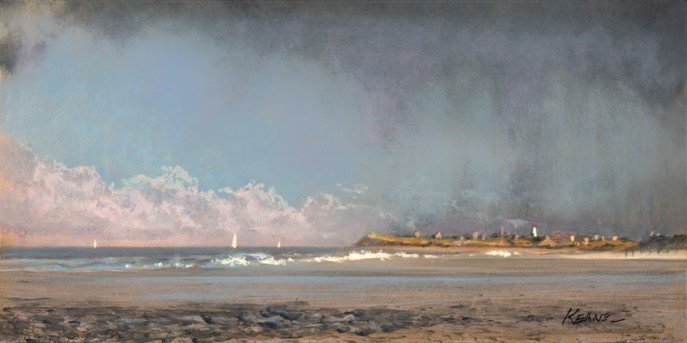
The Squall at Gurnet Head
He did quick color notes, which became the inspiration for his painting The Squall at Gurnet Head. After that, things turned sharply around. Everything he painted flew off the wall. “It was providential,” he says. “It all happened when things couldn’t get any lower; it felt like a dream. Things happened the way they needed to happen, when they needed to happen.”
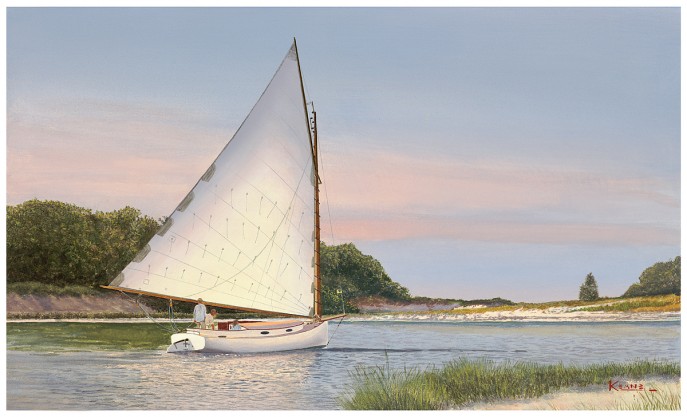
A Twilight Sail
In explaining his creative process, Michael says he loses all sense of time and space when he works. “I once did a big painting in less than a week—I felt like I didn’t paint it. I held the brush, and the brush just went. As an artist, I’m wide open to what I’m receiving. It’s a sensitive thing.”
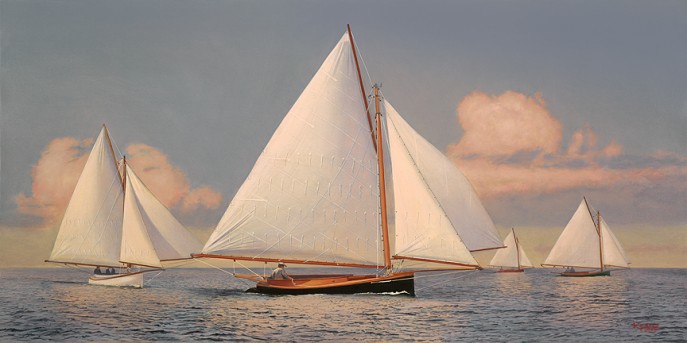
Off Nantucket
People have always been drawn to his work, and although he doesn’t understand all the reasons, he thinks it may be related to the reason that he paints. “Art should elevate life,” he says. “That’s the whole point of it. Fine art should express higher ideals. We get enough in life to pull us down, art should lift us up.
“Like good music, art lifts you, it changes you, it alters your state of consciousness,” he continues. “That’s what exhilaration is.”
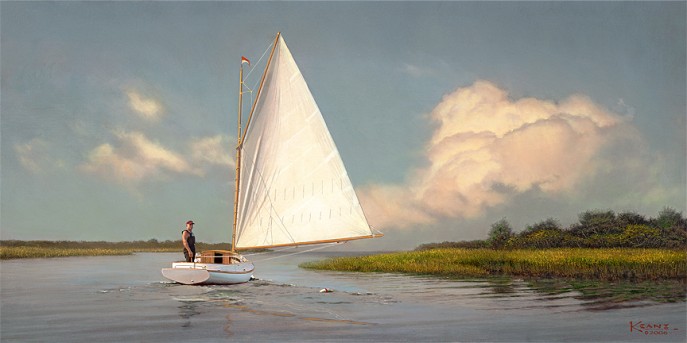
The Last Trap
Everyone who knows Michael, who loves his work, and who buys his paintings, tells him the same thing. “They tell me they look at the sky now—they say, ‘you made me look at the sky.’”
I can’t imagine a higher elevation for art, or an artist, than that.
“There is one spectacle grander than the sea, that is the sky.” –Victor Hugo
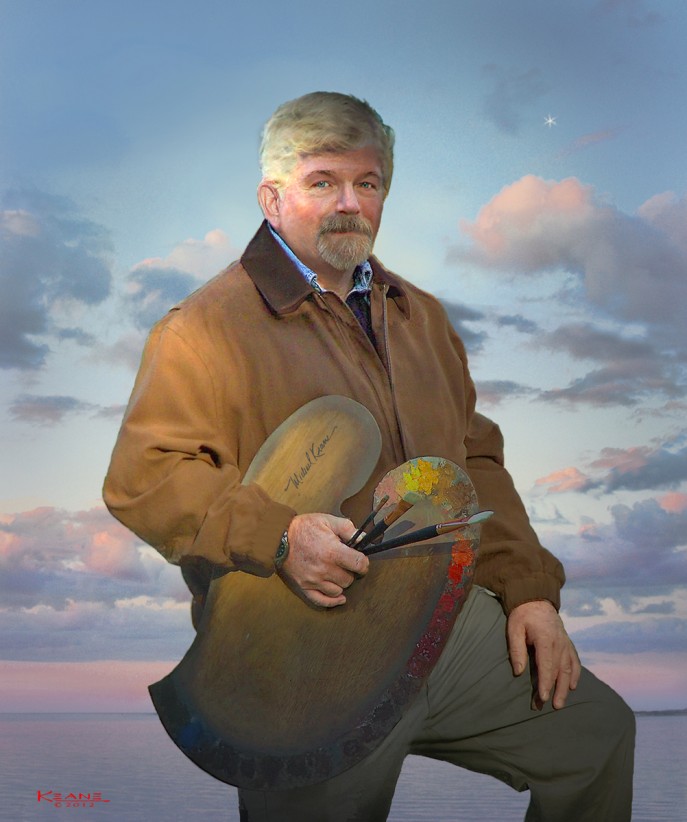
You can find Michael Keane’s artwork at Quidley and Co. Galleries in Boston and Nantucket, Massachusetts, and at Russell Jinishian Galleries in Fairfield, Connecticut.






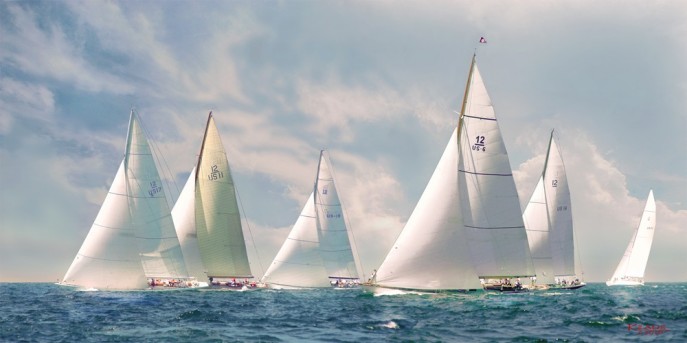
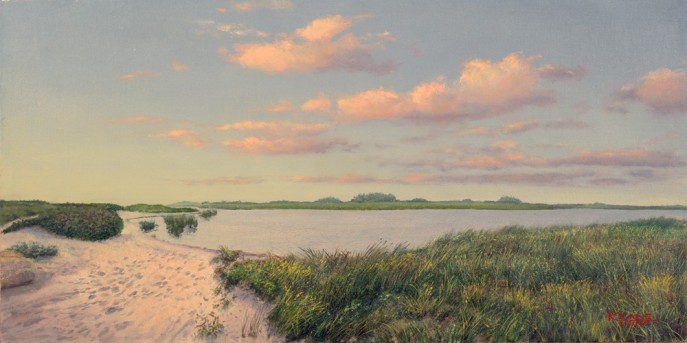 Miacomet by Michael Keane
Miacomet by Michael Keane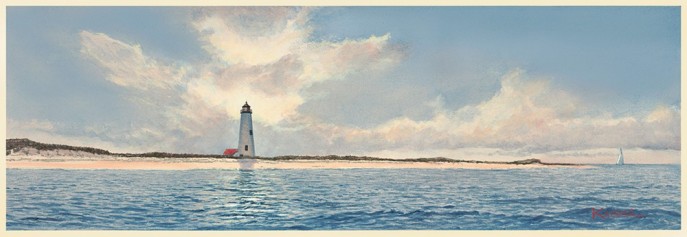 Great Point Lighthouse by Michael Keane
Great Point Lighthouse by Michael Keane